the only limit is IMAGINATION
A countless selection of materials , fabrics and leathers are available for customizing your spaces

A countless selection of materials , fabrics and leathers are available for customizing your spaces
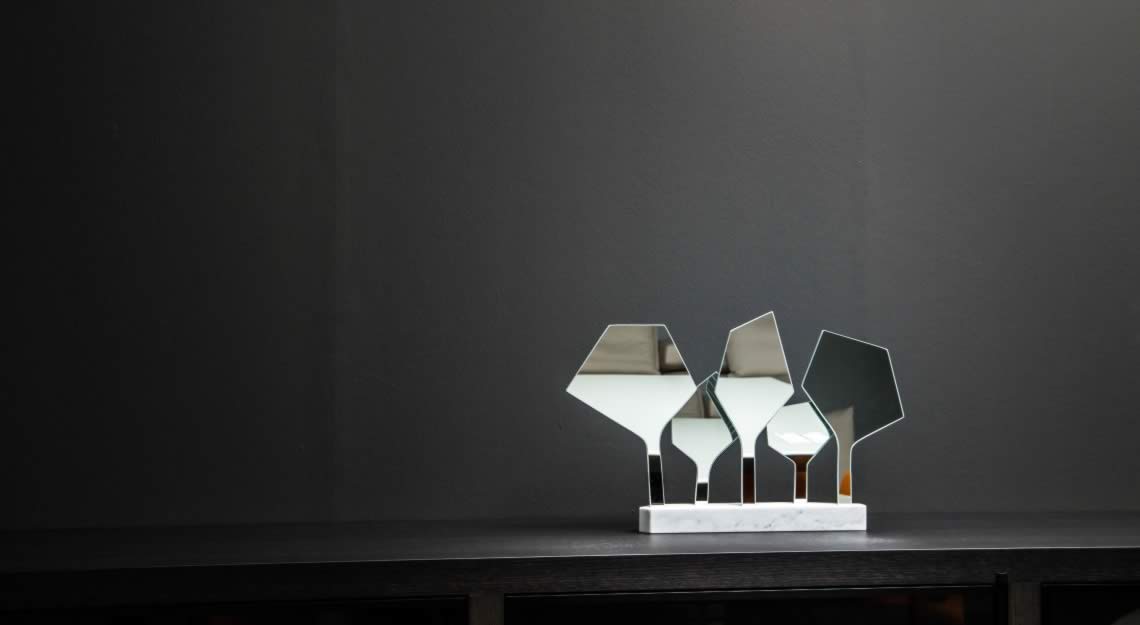
Mirror Shard: Ferrero1947 presents a new project in the exhibition “When the mirror makes you beautiful” ,based on the type of the console and its interpretations completed by a mirror from the same rigor. Essential graphic lines and alternation of different materials, characterize the ‘Frank’ project, where the young designer Luca Montrucchio worked with typical refined influences of the Jean Michel Frank’s style in a contemporary reinterpretation.
Frank is also a tribute to Franco Curletto, who hosts the event and who made beauty his philosophy of life. A collection of small table mirrors, private vanity, complete the project, translating into a smaller scale the lines and the rigor of the primitive idea.
The project is made entirely by hand, with the intervention of local artisans: each element is the result of a careful manual labor. Ferrero1947, with an experience of almost 70 years in the selection, distribution and sale of contemporary furniture, from 2105 decided to enter the world of production, producing a collection that embodies the ideology and style acquired over many years of activity.
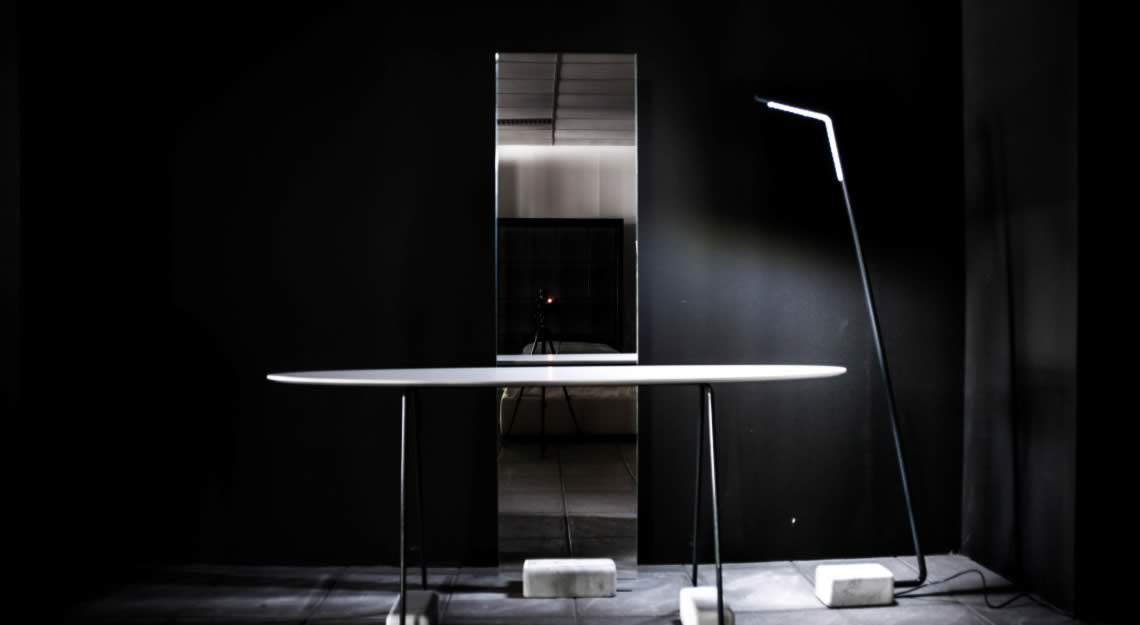
Ferrero1947 presents a new project in the exhibition “When the mirror makes you beautiful”, based on the type of the console and its interpretations completed by a mirror from the same rigor. Essential graphic lines and alternation of different materials, characterize the ‘Frank’ project, where the young designer Luca Montrucchio worked with typical refined influences of the Jean Michel Frank’s style in a contemporary reinterpretation. Frank is also a tribute to Franco Curletto, who hosts the event and who made beauty his philosophy of life. A collection of small table mirrors, private vanity, complete the project, translating into a smaller scale the lines and the rigor of the primitive idea. The project is made entirely by hand, with the intervention of local artisans: each element is the result of a careful manual labor. Ferrero1947, with an experience of almost 70 years in the selection, distribution and sale of contemporary furniture, from 2105 decided to enter the world of production, producing a collection that embodies the ideology and style acquired over many years of activity.
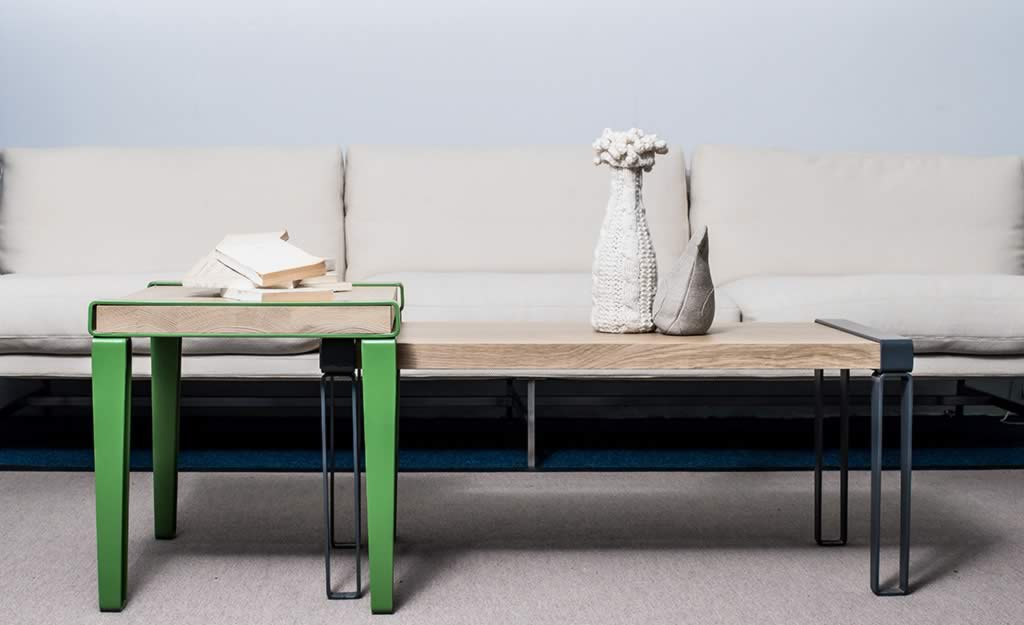
FERRERO1947 presents Belt, after nearly 70 years of experience in the selection, distribution and sale of contemporary furniture, decides to enter in the world of production, creating division “Collection” for editing a collection of furnishings and implement the ideology and style acquired in many years of activity, with the support of the historic Private Archive, which collects a rich heritage of Italian and international design from 1940 to the present.
The coffee table “BELT” born in anticipation of what will be 01 Collection: its simple shapes and rigorous, with the study of a detail that generates the entire project, born from the creativity of the young designer Luca Montrucchio and represents totally style Ferrero1947 .
The product will be available in a wide range of colors and finishings, however, the company for its launch has wanted to focus on the contrast between two materials: metal and wood. The varnished metal, wraps and holds a thick top of fine wood, deliberately not finished with a touch of nature, and valuable in its natural veins.
Particular attention was paid to details, such as the tapering of the legs, and the proportions between the parties, such as that between the thickness of the metal profile and the radius of curvature, in an alternation of full and empty spaces.
To make the project even more appealing is the infinite number of possible combinations thanks to two heights and three different lengths, with harmonious shapes which allow you to create games of over-lapping, a reflection of the Bauhaus, giving a unique movement to the environment in which they are placed.
The name “BELT” is inspired by the shape of the structure of the legs, which surrounds and supports the wood top as a soft metal belt.
The “Collection 01” Ferrero1947 will be previewed in Milan during the Salone del Mobile, in via Cerva 16 at the Flagship Store Agata Della Torre, fashion designer that processes and shares the same principles of rigor and sophistication of style Ferrero1947
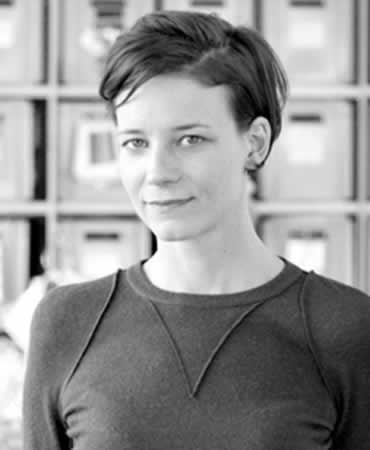
Wieki Somers and Dylan van den Berg studied at the Eindhoven Design Academy in the late 1990s and in 2003 they founded the Wieki Somers Studio, which is focused on reading the environment in which we live every day. The work of the studio is distinguished by a great attention to materials, technological research, and imagination.
The designers work for a wide variety of international manufacturers, museums and galleries, and have established an intense relationship with some private collectors. They have received numerous awards and their works are part of important collections, including the Museum of Modern Art in New York, the Center Pompidou in Paris, the Boijmans Van Beuningen Museum in Rotterdam and the Victoria and Albert Museum in London. Ferrero 1947 is proud to present their limited edition collections of 99 specimens of vases, which link their shape to some reflections on the water. The result is a very poetic collection, of great craftsmanship and preciousness.
In this collection the most complex project from an artisanal point of view and the most intense from an aesthetic point of view is “Ice Flowers”: an ice-like cube that refers to Global Seed Vault on Spitsbergen. A set of glass sheets layered with petals in the middle that create a depth and a new scene with the real living flower. Another example of great charm is “Narcissus”, inspired by the painting “Narciso” by Caravaggio; a metaphor for the destructive relationship between man and nature. The vase shows a isolated flower in a puddle of oil. “Water Levers” is inspired by the current theme of continuously measuring our water levels due to climate change; the composition with flowers, volumes within volumes, use of different levels of water and a mirror base, together create an unexpected stratification. “Deepwater” the design of the deep waters refers to the oil that originates on the bottom of our oceans, whose natural balance with water it is interrupted by human actions; these actions can cause eco catastrophes such as “Deepwater Horizon”. Finally the “Erosion” model is inspired by the book “La lecture des Pierres” by Roger Caillois; erosion on earth is caused by natural elements such as wind, water and glacial ice. It is the process by which the surface of the Earth wears out.
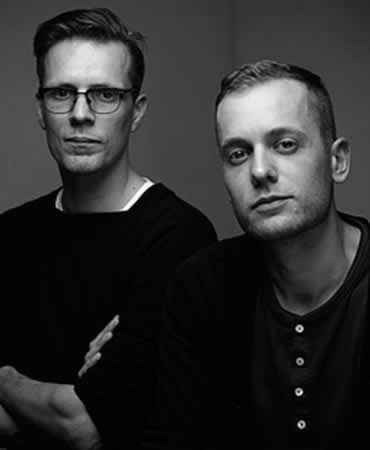
Maarten Kolk (1980) and Guus Kusters (1979) have been working together since 2009, the year of opening of Studio Kolk & Kusters. Both graduated with honors from the Eindhoven Design Academy, they develop independent projects and commissioned works as set-ups and curators of exhibitions and shows.
According to their philosophy poetry is found in nature and elements such as history, color and landscape are the foundation of their work, trying to translate this into objects, applications of materials, exhibitions and innovative production methods.
The Firm received the Sanoma Jong The Talent and Doen | Materiaalprijs’11 and in 2009 their work “Veldwerk” was nominated for the design prijs in Rotterdam. Since 2013 Maarten Kolk has been a member of the consultative committee for the design of creative industries “Fondo NL” and Guus Kusters is tutor at the Design Academy in Eindhoven.
Their first works of great success, still in great demand today, are herbals of great poetry, which reflect the custom of many aristocratic and wealthy families in many Nordic countries, but also in France, Great Britain and Italy to create decorative panels composed of plants and flowers from their gardens;
in this case the artists use tradition, according to their style and way of working, updating it through contemporary techniques. The selected flowers and plants are in fact laid on different layers of fabric with a soft, poetic and romantic effect of strong impact.
Another very interesting work of theirs concerns a collection of dishes called “Crockery to wither”. This hand-painted eight-piece floral dining set is produced by the famous Royal Tichelaar Makkum, a Dutch manufacturing company founded in 1572 and specialized in designer ceramics and porcelain, also a supplier of the Real Casa. Traditionally, the paints on fine porcelain are applied by hand, making the job high intensity and therefore expensive. In this project Maarten Kolk & Guus Kusters have developed glazing techniques that do not require artisans to paint the dishes directly, but rather to insert this process during the mold before the product is melted, making it possible to make several copies of a painting. After each launch the glaze is washed further and crumbles, drawing a clear parallel with flowers withered in nature; the image of the flower is clear and sharp after the first launch, wilting and fading after multiple reproductions.
With this collection the Studio Maarten Kolk & Guus Kusters balances nature and productive culture, emphasizing the beauty of both worlds. The service consists of two plates of different sizes, bowls, a cup, a carafe, a large plate to be used as a plate or tray and a vase in 6 or 9 different decorations.
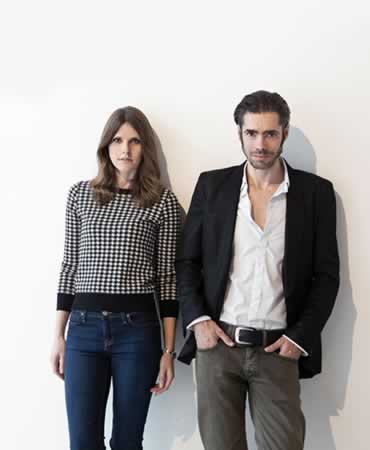
The twin souls Job Smeets and Nynke Tynagel founded Studio Job in 2000, after studying at the Design Academy in Eindhoven and in a few years they became contemporary cultural pioneers, slowly revolutionizing common preconceptions about the distinct realms of art and design. Striving towards the creation of Gesamtkunstwerk, which sometimes translates poorly into “aesthetics”, but more precisely means a ‘synsthesis of the arts “or” universal works of art “, the Studio Job often refers to the aesthetic ideals of the composer Richard Wagner in their practice that tries to move towards the clearest and deepest expression of stories and mythologies.
Studio Job’s work is in the true spirit of the Renaissance in which techniques are exchanged and disciplines are ignored towards the creation of the new, where ideas and images are easily profused regardless of geographical or conceptual boundaries and are reproduced in something new, in which culture, spirituality and aesthetics converge in a single space, and where production and craftsmanship become a bridge between art and design, occupying and redefining the gray area in the middle.
Studio Job creates a type of work that addresses classic, popular and contemporary design and visual art. The symbolism and iconography that Studio Job creates is heraldic and regal even in its imaginary pop cartoon; an elegant but also instinctive and almost primordial work.
Job Smeets loves to call their style ‘New Gothic’ as evidenced by the perfectionism and uniqueness that have become one of the characteristics that define the studio itself, while Nynke Tynagel often talks about the work referring to a symphony orchestra, aligning their process of creation with the way that a cohesive musical piece was created by a great variety of different sounds, also remembering that each of the parts is of equal importance as it lends itself to the realization of the whole or of the universal graphics.
The studio includes traditional and contemporary artisans, professionals, industrialists from the production of furniture, sculptors and painters, specialists in cast bronze, colored glass, laser cutting and 3D printing, all in their different specializations, just like the aforementioned orchestra. Unique in its approach and extravagant in detail, Studio Job announces a new moment in the current conversation about the definition or lack thereof between the disciplines. Contrary to the contemporary ambivalence towards the decorative arts, Studio Job is revolutionizing the perception of gender, generating opulence, ornaments, complexity, maximalism, while at the same time it remains committed to a high level of craftsmanship.
Their production oscillates between limited editions and unique pieces for the most famous design galleries and museums in the world, the collaboration with famous design companies such as Moooi, Seletti, Lensvelt and Makkum and special projects such as the scenography for the concerts of the pop star Mika .
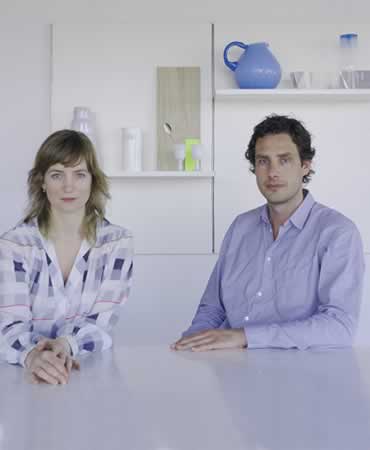
Scholten & Baijing have been working together since 2000, with the creation of their studio; Stefan Scholten studied at the Eindhoven Design Academy, while Carole Baijings is self-taught. After the realization of several projects in which the boundaries between autonomous and applied work are perceived, in their subsequent works there is more interest in interior design up to be considered as one of the most interesting, innovative and dynamic duo in the field of world level.
Famous for their sensitive and discreet but functional products, their extraordinary and often unexpected use of color, their exquisitely made objects, they have applied their unique style in the most diverse sectors, from ceramics and silverware to fabrics and even to a concept car.
Scholten & Baijings have received numerous prestigious awards such as the Elle Decoration International Design Award (EDIDA) for Young Designer Talent 2011, the nomination for the Designer of the Year at the Wallpaper * Design Awards 2015 and the Oeuvre Sanoma Woon Awards 2014.
Their products and limited editions are exhibited in museums and galleries such as the Cooper-Hewitt National Design Museum in New York, the Art Institute of Chicago, the Victoria & Albert Museum in London and the Boijmans van Beuningen Museum in Rotterdam. Their clients include many contemporary and experimental companies such as Maharam, Hay, Ikea, Karimoku New Standard, Georg Jensen, 1616 / Arita Japan, Moooi …
Based on extensive research on Arita ceramics and the analysis of local historical masterpieces, for example, Scholten & Baijings have created a series called colored porcelain. Typical Japanese colors, such as, for example, light green aquarelle-blue, red-orange and ocher, are recontextualized and applied in new combinations in a set of functional contemporary tableware that overall still reflect the typical Arita color spectrum, in a new and unedited refined and very contemporary image. The layered color compositions are carried out in various enamel textures and shades and are combined with the natural white of the porcelain itself. Made with a delicate sense of local craftsmanship, the color of the porcelain shows an original European perspective on the Japanese tradition.
This same approach has been used for many other materials such as wool, wood, glass, always looking for unusual combinations of colors, the result of stratifications and reflections and with an eye always turned to the Dutch tradition. From 2019 the two designers have decided to continue the work independently.
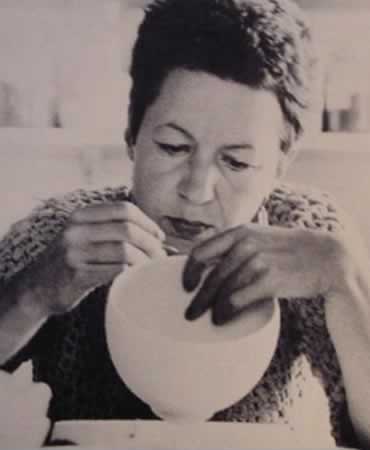
RAR is a studio founded in 2010 in Holland by two German artists, of very different generations, but united by the same course of study and the same passions: Beate Reinheimer and Ulrike Rehm.
Beate Reinheimer was born in 1943 and graduated from the Gerrit Rietveld Academy in Amsterdam in 1972, then holding many conferences at the same Academy for over 25 years; his ceramic works have been exhibited all over the world and are included in the permanent collection of the Boymans van Beuningen in Rotterdam and the Centraal Museum in Utrecht.
Urike Rehm was born in 1976 and graduated from the same Academy 25 years later and ended his study at the Sandberg Institute in Amsterdam in 2011. His work was exhibited at the Stedelijk Museum in Amsterdam and during the Dutch Design Week in Eindhoven.
The two artists decided to combine passions and skills by starting to create some objects of great poetry, where Reinheimer’s long experience and recognized ability and skill are combined with the freshness and modernity of Rehm’s works.
The theme addressed is often that of vases or containers for flowers, where the flower itself becomes superfluous for the beauty of the object itself, to hang on the wall as a decorative element. Among the most interesting works of the two artists, a porcelain wall installation stands out: “Hain”: the collection consists of three tall porcelain trees combined with “mushrooms” and is glazed in semitransparent green. Mushrooms can be used as a display. The complete series was produced in a limited and numbered edition of 10. Three smaller sets are made in an edition of 99. “Hain”, the poetic German word for “forest”, originates from the designers’ fascination with the nature, art and architecture. This work combines the artistic structures of flora, the 17th and 18th century Wunderkammer and the previous use of consoles in a fascinating and magical object.
Another now iconic collection consists of more than 60 refined wall-beetle pots, all different, made and hand-painted, each numbered 1-30 in a limited edition: the beetles, each referring to a real existing insect, have become an object much desired by enthusiasts and collectors.
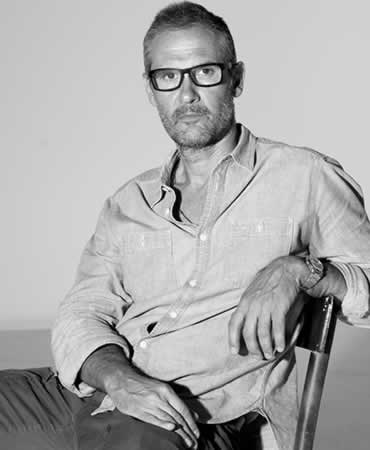
Mauro Mori was born in Cremona in 1965 and since his youth he travels a lot and expresses the perceptions of his travels through his innate manual creativity; his opportunity to meet people and cultures, different languages ??and unusual places provide the ideas on which his research is based and express themselves in his personalized functional and figurative forms.
The shapes are simple and elementary like the mold of the hand that creates them; the materials create his unique works by amplifying the natural heritage and enhancing what Nature has created. Precisely for these reasons, Mauro Mori’s works are modeled directly by the hands and not by the machines, therefore they bring emotional and emotional values, which become the added value and the fulcrum of the work itself.
Solid blocks of natural material, often worked in their places of origin, such as the Albizia Rosa marine wood of the Seychelles, natural or ebonized, or the Italian marble, handpicked and worked directly in Carrara, are the origins of the unique handmade forms . The plasticity of the materials, the reliefs on them and the desired and evident craftsmanship constitute the common thread that runs through all the designer’s work and reveals the desired shape through a process of subtraction. His work develops through the reading of symbols and symbolisms, sometimes drawn from everyday life and sometimes sought after in specific historical periods and geographical contexts and then translated into a contemporary and personal language. Research changes, transforming and maturing continuously: it alternates between induction and deduction, belongs to today and adapts to the daily life that surrounds everything and is constantly updated.
Mauro Mori’s works identify a luxury not ostentatious, but hidden in the material, without the need to adopt decorative or complex forms; a luxury that is celebrated in the preciousness of the natural material and the potential that, through the craftsmanship, are expressed in the best way.
The constant research and development is also demonstrated by the work on metals, which are worked in the form of slabs and finished with oxidations and patinas: iron, steel and copper, often rough and never polished are among the preferred metals, with which they are made specimens unique, like all the designer’s works.
In 1994 Mauro Mori starts his own business and in 1998 officially opens his atelier, Mauro Mori Studio. In 2004 Ferrero1947 dedicated a retrospective to him in his gallery in Turin, with unique pieces in pink Albizia, ebonized pink Albizia, steel and copper.